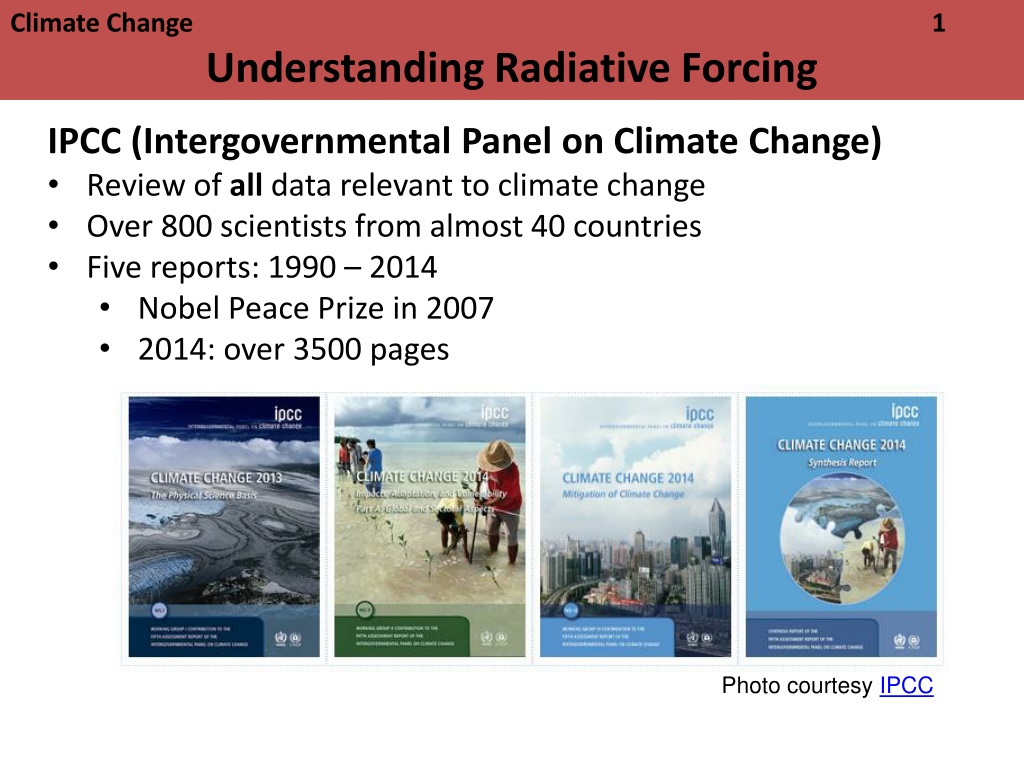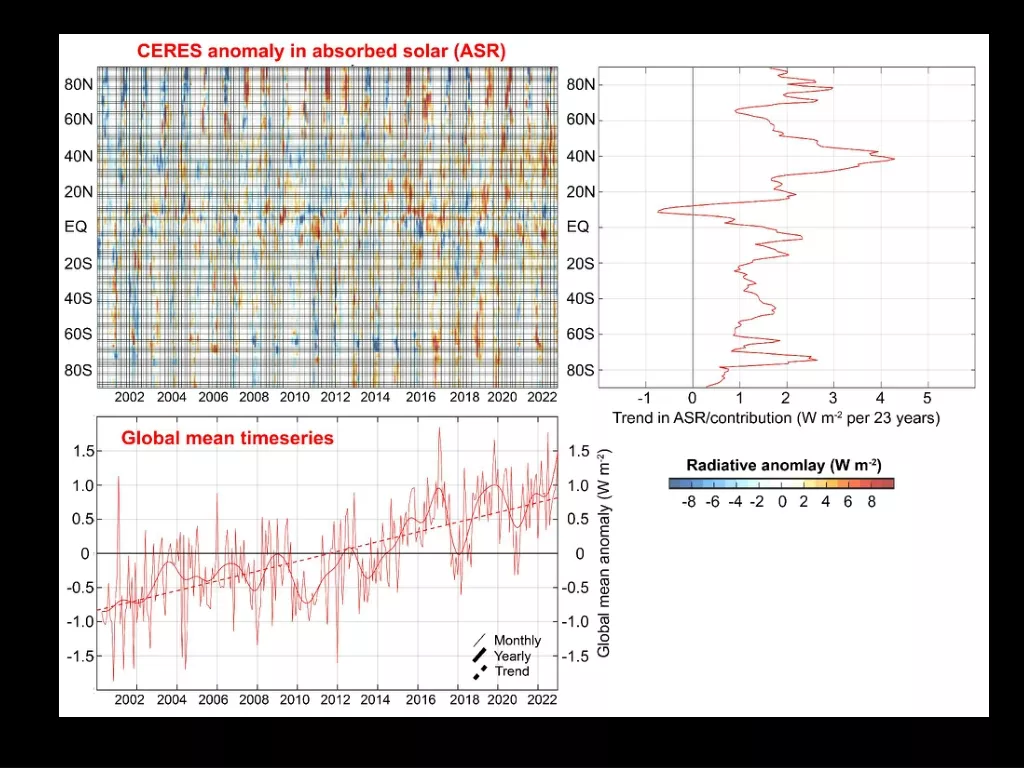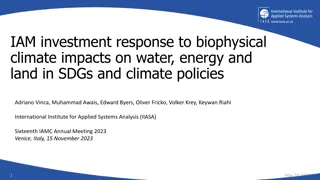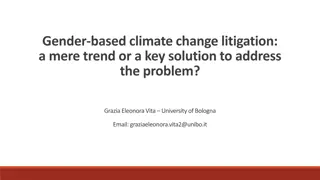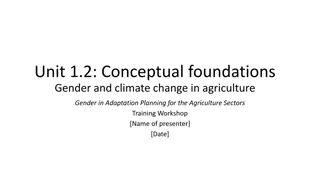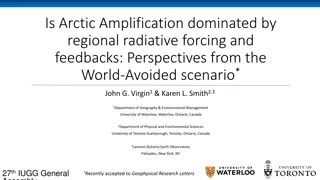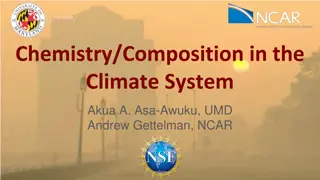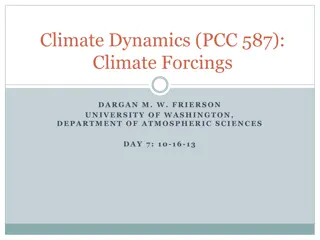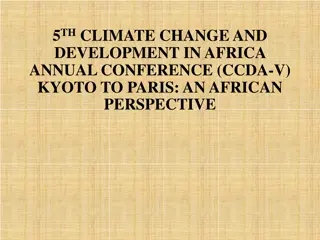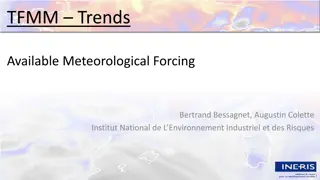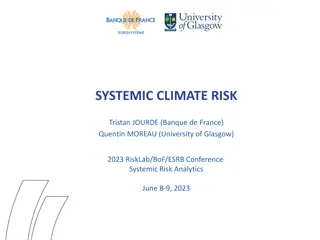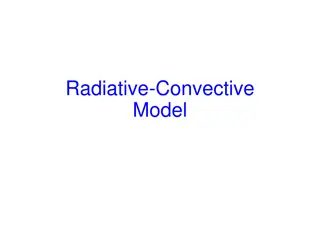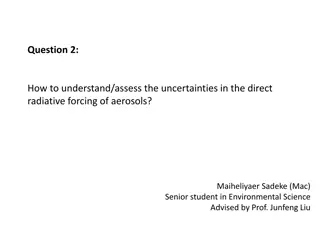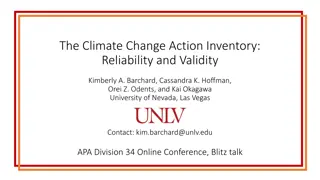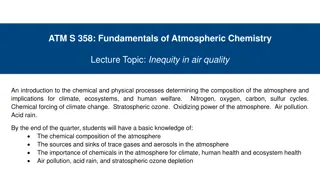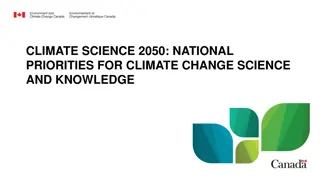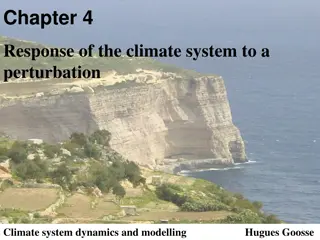Climate Change and Radiative Forcing
Investigate the impact of radiative forcing on climate change through comprehensive data compiled by the IPCC. Over 800 scientists worldwide have contributed to five reports spanning from 1990 to 2014. The findings shed light on the factors influencing Earth's radiation budget, with a particular focus on the warming and cooling effects relative to pre-industrial levels. Key contributors include atmospheric constituents, land-use changes, and notable greenhouse gases such as CO2, CH4, N2O, and CFCs. Dive into the intricate dynamics of radiative forcing and its implications for our planet's future.
Download Presentation

Please find below an Image/Link to download the presentation.
The content on the website is provided AS IS for your information and personal use only. It may not be sold, licensed, or shared on other websites without obtaining consent from the author.If you encounter any issues during the download, it is possible that the publisher has removed the file from their server.
You are allowed to download the files provided on this website for personal or commercial use, subject to the condition that they are used lawfully. All files are the property of their respective owners.
The content on the website is provided AS IS for your information and personal use only. It may not be sold, licensed, or shared on other websites without obtaining consent from the author.
E N D
Presentation Transcript
Climate Change 1 Understanding Radiative Forcing IPCC (Intergovernmental Panel on Climate Change) Review of all data relevant to climate change Over 800 scientists from almost 40 countries Five reports: 1990 2014 Nobel Peace Prize in 2007 2014: over 3500 pages Photo courtesy IPCC
Climate Change 2 Understanding Radiative Forcing IPCC (Intergovernmental Panel on Climate Change) Figure & Text courtesy IPCC Summary for Policymakers
Climate Change 3 Understanding Radiative Forcing IPCC (Intergovernmental Panel on Climate Change) Radiative Forcing (RF):the affect a factor has on the Earth s radiation budget Factors: atmospheric constituent, land-use change Positive RF: the factor warms the atmosphere Negative RF: the factor cools the atmosphere Relative to 1750 (pre-industrial revolution) RF = Incoming Radiation Outgoing Radiation
Climate Change 4 Understanding Radiative Forcing IPCC (Intergovernmental Panel on Climate Change) Radiative Forcing (RF):the affect a factor has on the Earth s radiation budget (relative to 1750) CO2 has increased from 280 ppm (1850) to 400 ppm RF = 1.68 W m 2 Today, every m2of the Earth s surface atmosphere is warmer by the equivalent of 1.68 W due to CO2 RF = Incoming Radiation Outgoing Radiation
Climate Change 5 Understanding Radiative Forcing IPCC (Intergovernmental Panel on Climate Change) Radiative Forcing (RF):the affect a factor has on the Earth s radiation budget (relative to 1750) CO2 = 1.68 W m 2 Other factors: CH4, N2O, CFCs, land use change Overall RF ~ 2.29 W m 2 Uncertain: 1.13-3.33 W m 2 Text courtesy IPCC Summary for Policymakers
Climate Change 6 Understanding Radiative Forcing Figure courtesy IPCC Summary for Policymakers
Climate Change 7 Understanding Radiative Forcing Very High High Medium cool warm How these affect GHGs Human Emissions RFs (with uncertainties) Figure courtesy IPCC Summary for Policymakers
Climate Change 8 Understanding Radiative Forcing Very High High Medium Aerosols & Clouds Low Land Use Changes in Sun Figure courtesy IPCC Summary for Policymakers
Climate Change 9 Understanding Radiative Forcing Sums 2011 1980 1950
